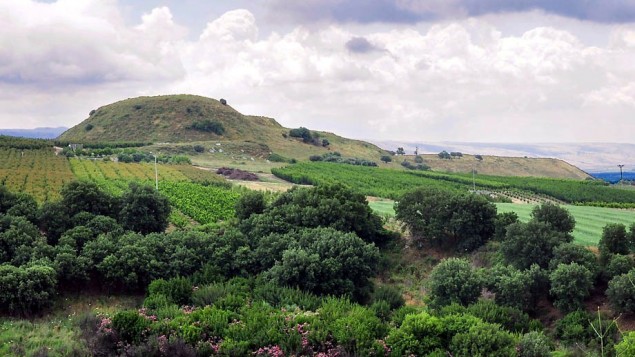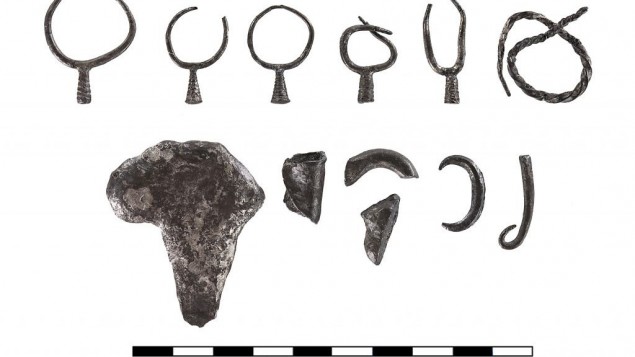Archaeologists digging in northern Israel found a silver treasure trove at a site associated with the biblical city of Abel Beth Maacah, located just south of the modern border with Lebanon.
Sitting at the headwaters of the Jordan on a tell overlooking the Hula Valley, Abel Beth Maacah was an Iron Age town on the northern marches of the Israelite kingdom. The Book of Kings chronicles its conquest by Ben-hadad I of Damascus in the early 9th century BCE and by Neo-Assyrian king Tiglath-pileser III in 733 BCE.
During excavations in the summer of 2013, a team of archaeologists from Azusa Pacific University and Hebrew University found a massive stone structure, "possibly a tower that was part of a fortification" overlooking the Hula Valley, according to a article recently published in the journal Strata.
Near the base of the massive structure, whose purpose is not yet clear, the team found "several basalt ring weights, parts of a collared-rim jar and a complete jug." Most astonishing, however, was "a small jug that contained a silver hoard composed of earrings and ingots." Based on the pottery surrounding the small jug, archaeologists date the tiny trove to the late Bronze Age or early Iron Age - around 3,300 years ago - the period associated with emergence of the Israelites.

Dr. Robert Mullins of the Azusa Pacific University told The Times of Israel this week that, then as now, earrings were a unisex cosmetic accessory, so they could have belonged to men or women.
Since the find predates the invention of currency by nearly a millennium, the hoard of silver could have served as a life savings. "Before coins were invented in the 5th century BCE, people would weigh out bits of silver on pan scales against known weights, such as the famous shekel of the Bible," Mullins said. "These pieces were evidently placed into a jug whose neck was missing, probably for safekeeping, though we have no proof that the jug and its contents were hidden below a floor."
Silver hoards of this kind have been found at numerous archaeological sites across Israel; the Abel Beth Maacah collection is one of 20 such finds, but it's the only one that had the silver pieces wrapped up in plant fibers. Radiocarbon dating by the Weizmann Institute found that the fibers are modern - from the Ottoman period or later.
"Our best guess is that, given the missing neck and the close proximity of the jug to the ground level, the plant fibers found their way inside the jug at one point and got intertwined around the already existing jewelry," Mullins said. "We don't see the dating of the fibers to have any bearing on the date of the hoard, which is most certainly ancient."
Abel Beth Maacah was likely ruled by the Canaanites in the Bronze Age, and may have been conquered by one of the neighboring Aramean kingdoms in the early Iron Age, Mullins said, but the ethnic identity of its inhabitants remains unknown. The style of pottery matched that from the nearby site of Tel Dan, which was also under Aramean rule during this period.
"We are very interested in the possibility of an Aramean population at our site since so little is known about these small Aramean states that bordered ancient Israel," he said. "Further excavation will likely reveal more information about the inhabitants, whatever their ethnic identity."
Digs at Abel Beth Maacah are expected to recommence this summer. Because so little of the site has been excavated, there are sure to be more artifacts unearthed, providing insight into the Aramean kingdoms bordering early Israel.




That one silver blob looks exactly like the continent of Africa.